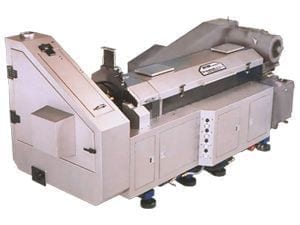Uneven wall thickness in aluminum cans is a defect that occurs when the material is not distributed uniformly during the can forming process. This can lead to weak spots in the can, which may compromise its structural integrity and result in potential product leakage or damage during handling and transportation. Here’s a detailed explanation of the factors contributing to uneven wall thickness and potential solutions:
- Material properties: The aluminum material’s properties, such as its temper, grain size, and anisotropy, can influence the material’s flow during the forming process. If the material properties are not optimized for the can forming process, it can result in uneven wall thickness.
Solution: Ensure that the aluminum material used for can production has the appropriate properties and is within the specified tolerances for the intended application.
- Tooling and machine settings: The tools and equipment used in the bodymaker, such as the drawing dies, ironing rings, and punch, play a critical role in shaping the can. If these components are worn, damaged, or not set up correctly, they can cause uneven material distribution and result in uneven wall thickness.
Solution: Regularly inspect and maintain the tooling and equipment to ensure they are in good condition and set up correctly. Replace worn or damaged components as needed.
- Lubrication: During the can forming process, lubrication is essential to minimize friction between the aluminum material and the tooling. Insufficient or uneven lubrication can lead to uneven material flow and result in uneven wall thickness.
Solution: Ensure that the lubrication system is functioning correctly and that the appropriate lubricant is applied uniformly on the aluminum material during the forming process.
- Blank holder pressure: The blank holder pressure is crucial in controlling the material flow during the drawing and ironing stages of the can forming process. If the blank holder pressure is not set correctly, it can cause uneven material distribution and result in uneven wall thickness.
Solution: Monitor and adjust the blank holder pressure to maintain the optimal material flow during the forming process.
- Multi-stage drawing process: In the case of deep, multi-stage drawn cans, the drawing process can cause slight thinning of the wall adjacent to the punch nose and slight thickening towards the top of the can body. This effect may be more pronounced in deep cans.
Solution: Optimize the drawing die radius and blank holder pressure for each stage of the drawing process to minimize uneven wall thickness.
By addressing these factors and maintaining proper process control, it is possible to minimize uneven wall thickness in aluminum cans and ensure the production of high-quality, reliable cans.














